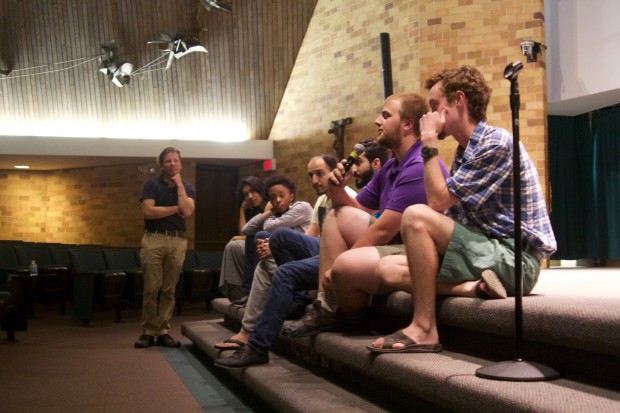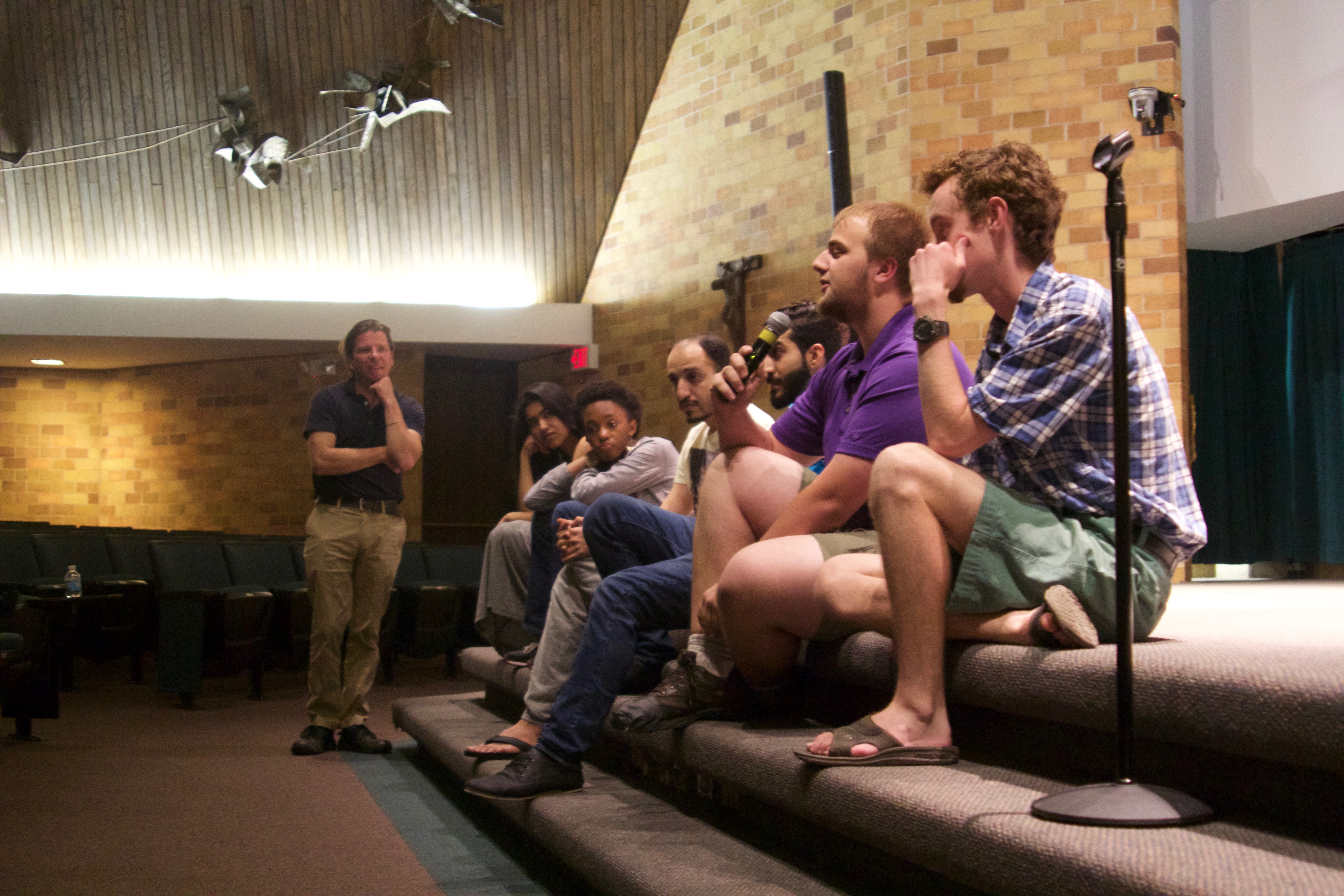
It can be nerve-wracking to do anything the first time. Like writing, directing, and producing your first movie. But it can be even more terrifying to show your first film to an audience – for the first time.
“I just hope they laugh,” St. Thomas junior Hadi Alabduljabbar said about the short film he and his cousin, senior Suhaib Abojouhar, wrote, directed and produced themselves. The film, called Existence, was part of FILM 297, a class they took together over the summer.
Alabduljabbar, Abojouhar, the four other students in the class and a crowd of about 30 people gathered Thursday night in the O’Shaughnessy Education Center Auditorium for a film screening to see the products of the students’ hard work. Students collaborated in pairs to produce the three films that were shown.
The other students enrolled in the course were sophomores Sunita Dharod, Seamus Burke, Cory Spawn and Amira Warren.
Existence was an Inception-like movie where the main character has multiple dreams within a dream. Dharod and Warren’s film, It Means More to Some People, was a poignant social commentary on campus politics. Burke and Spawn’s Brotherly Love was a comical documentation of two brothers on a road trip.
After a couple weeks writing and revising scripts, students had two weeks to shoot and edit their movies. Or, in the case of Alabduljabbar and Abojouhar, shoot in one day and edit for about two weeks.
“The hardest part actually was to put the film together,” Abojouhar said. “And especially with the shooting of the scenes: where we should put the camera, from where we should take this angle and how many angles we need for this one scene.”
“They work in little groups like that so they can have somebody to rely on,” said James Snapko, their professor. “Because it’s a lot of work. There’s a lot of work done outside of class, which is the nature of film making. You can’t make a movie sitting in a classroom, or at least not a very good one.”
Fourteen years ago, out of the blue, Snapko, a long-time director, writer, and producer, received an email about an open teaching position at St. Thomas. And ever since, he’s been spreading his passion for film to his students.
“I’ve taught a wide variety of classes, a lot of different types over so many years,” he said. “It’s just something that’s part of my life. You can learn so much through cinema. To be able to understand how to be expressive in that kind of visual language, using images to somehow create meaning, it’s so important.”
Throughout the screening, the bond between each of the students and their teacher was evident.
Snapko even dedicated a moment before the screening to Warren, who was attending a vigil for officer-involved shooting victim Philando Castile before she arrived at the screening.
“As a sign of solidarity, I wanted to spend a moment of silence, just as a way of connecting to Amira – not just her, but also her friends and family, and the family of the victim,” Snapko said as he addressed the audience.
During the panel following the screening, students shared the experiences they had while producing their films, but not all of them were particularly positive. Seamus and Spawn’s two lead actors bailed last minute, Alabduljabbar and Abojouhar had multiple arguments over the best approach to producing their film and Tuesday night’s storm cut out the power when the students were trying to finish editing.
But despite the challenges they faced, the students made Thursday night a success.
“They persevered, and we had a great screening,” Snapko said. “We got a crowd, and the films turned out really, really great.”
Written by Threesixty Journalism Scholar and intern Danielle Wong



